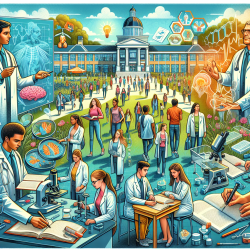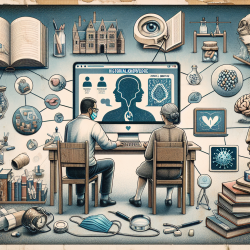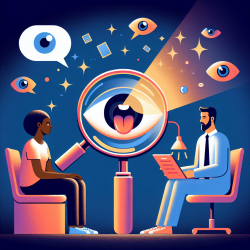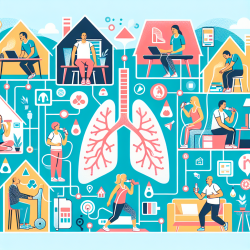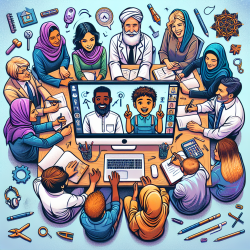Introduction
In the realm of speech-language pathology, practitioners are constantly seeking innovative methods to enhance therapeutic outcomes for children. A recent research article, "Generative learning facilitated discovery of high-entropy ceramic dielectrics for capacitive energy storage," though primarily focused on materials science, offers intriguing insights that can be translated into the field of speech-language pathology. By leveraging generative learning—a cutting-edge approach in machine learning—practitioners can significantly improve their decision-making processes and therapy outcomes.
Understanding Generative Learning
Generative learning is a type of machine learning that focuses on creating new data from existing datasets by learning the underlying patterns. This approach is particularly useful when data is limited, as it can generate new data with similar characteristics to the original dataset. For speech-language pathologists, this means having the ability to predict and tailor interventions based on a child's unique needs, even when comprehensive data is not available.
Application in Speech-Language Pathology
Incorporating generative learning into speech-language pathology can revolutionize how practitioners approach therapy. Here are some potential applications:
- Personalized Therapy Plans: By analyzing patterns in a child's speech and language data, generative learning can help create personalized therapy plans that cater to individual strengths and weaknesses.
- Predictive Outcomes: Practitioners can use generative models to predict potential outcomes of different therapy approaches, allowing them to choose the most effective strategies for each child.
- Data Augmentation: Generative learning can augment existing datasets, providing a richer base for analysis and decision-making, even when initial data is scarce.
Encouraging Further Research
While the initial research in generative learning for materials science is promising, its application in speech-language pathology is still in its infancy. Practitioners are encouraged to explore this approach further by:
- Collaborating with data scientists to develop generative models tailored to speech-language pathology.
- Participating in interdisciplinary research projects that explore the intersection of machine learning and speech therapy.
- Staying informed about advancements in machine learning technologies and their potential applications in therapeutic settings.
Conclusion
The integration of generative learning into speech-language pathology holds immense potential for improving therapeutic outcomes for children. By adopting data-driven approaches and embracing technological advancements, practitioners can enhance their decision-making processes and provide more effective interventions. As the field continues to evolve, staying at the forefront of research and technology will be crucial for delivering the best possible care to children.
To read the original research paper, please follow this link: Generative learning facilitated discovery of high-entropy ceramic dielectrics for capacitive energy storage.



